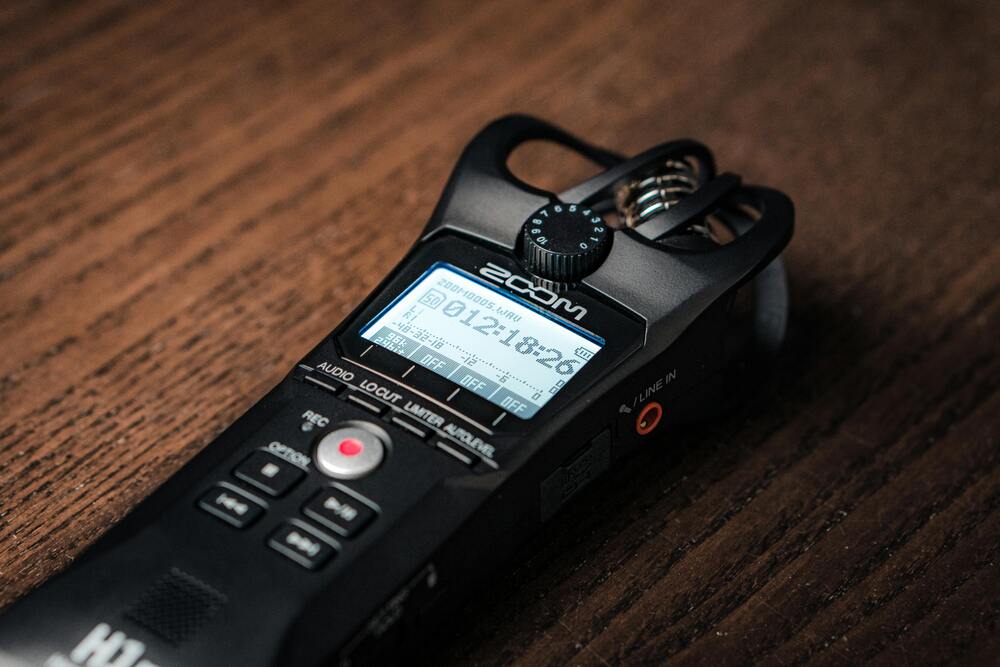
Why Voice-Over Matters More Than Ever in Today’s Digital Landscape
We are living in a world in which digital information is omnipresent—from social network updates to video streaming sites and learning platforms. With everything competing for attention, being heard is no longer optional; it's mandatory. Whether you're introducing a new product, teaching an audience, or building a reputation for your brand, how you say it can make—or break—the impact you intend.
This is where voice-over comes in. A professional voice-over doesn't just read from a script—they bring it to life. Voice-over can capture attention, educate, and persuade, ensuring your message isn't just heard but resonates with the audience. A good voice can make brands sound more believable, content more readable, and complex ideas more comprehensible.
But in today's tech-savvy age, where AI voices are also becoming sophisticated, a question comes naturally to mind: Is human voice-over a thing of the past? With the ease and pace of AI voice technology, business companies may well be wondering if it is time to make the transition. Though AI can mimic speech patterns, it can't match the human essence that gives voice-over such potency—the nuance of emotion, versatility, and originality that a live voice has to offer.
So, does human voice-over still matter? Absolutely. And in the sections ahead, we’ll explore exactly why voice-over is more important than ever in the digital world—and why choosing the right voice makes all the difference.
The Increasing Need for Voice-Over in the Digital World

With every passing day, digital content consumption increases by leaps and bounds, and the need for professional voice-over has never been greater. Whether in advertising, entertainment, education, or corporate communication, voice plays a central role in delivering the message. From increasing engagement to overcoming the language barrier, voice-over is no longer a mere value-add—it is a vital component in the toolkit of content creators as well as international brands.
Why then is there a demand for quality voice-over growing so rapidly? Let's find out why.
The Rise of Audio-Visual Content
The consumption pattern of content has witnessed a tremendous change. Social networking platforms, audio-visual streaming websites, podcasting, and learning websites have made video-audio the most popular platform. With billion daily video views on platforms like YouTube, TikTok, and Instagram Reels, the viewers expect quality sound with graphics.
But why is voice-over essential here? Research indicates that individuals learn more effectively if they hear and visually observe something, and thus professional narration is the game-changer in online narratives.
Why Voice-Over Works
Professional voice-over makes marketing videos more engaging and more likely to convert. A good voice can take a below-average ad and turn it into a good sales pitch. Clear, easy-to-follow narration brings e-learning modules to life, helping learners absorb and retain information more effectively. Audiobooks and podcasts rely solely on voice, making the quality of delivery the deciding factor between an engaging experience and one that’s skipped.
Personalization and Emotional Connection
Words are only half of it—the tone in which they are spoken is what really comes into play. Human beings are naturally drawn to human voices as they are infused with emotion, personality, and credibility. A good voice-over is capable of making a brand friendly, credible, and accessible, driving connection with the listener.
For instance, a calming, soothing voice makes wellness content and meditation apps sound more welcoming and supportive. A warm, lively tone makes learning material and explainer videos more accessible. Meanwhile, a strong, authoritative voice lends gravitas to corporate presentations and training modules, reaffirming professionalism.
With the era of mechanized and computerized communication, an added human touch comes from using a human voice. This allows brands to build lasting relationships with their target audience.
Globalization and Multilingual Voice-Overs
As businesses expand geographically, localization is more crucial than ever today. A message can be accurate and impactful in a language but fail to have the same impact in another if not translated. Multilingual voice-over comes into play at this point.
Why Multilingual Voice-Over Matters
With businesses and content producers now global, multilingual voice-over is now essential to ensure proper communication. It is not just a matter of translating words from one language to another—the tone, the manner in which a message is conveyed, and the cultural background all come into play when determining how well it will be received by a group of people. Multilingual voice-over, if properly executed, makes the content genuine, beneficial, and effective in over one culture and language.
Let's find out why the application of multilingual voice-over is essential for global success.
Ensures Cultural Fit
Avoidance of cultural misinterpretation is one of the greatest challenges in global communications. A carefully crafted sentence in one language can sound awkward—or even offensive—in another. That's why native speakers with the proper accent, tone, and cultural sensitivity are not just preferred—they’re essential.
A good business voice-over artist is aware of how language works, including:
- Formal vs. informal speech – Some languages have varying forms of address for different audiences (formal "vous" and informal "tu" in French, for example).
- Cultural expressions – Idioms, jokes, and regional references don't always translate literally. A skilled voice-over artist restates them for cultural appropriateness.
- Pronunciation and dialect differences – A Mexican Spanish voice-over will be different from a Spanish voice-over, just as American and British English vary in accent.
By being culturally suitable, brands and manufacturers are able to preclude misunderstanding and establish trust of their overseas fans.
Translates Content for International Listeners
All content types—training videos, advertisements, entertainment, and corporate presentations—are translated to appeal to its target market. Voice-over in different languages keeps messages precise and engaging regardless of the language used.
How Voice-Over Empowers Global Expansion
- Training and E-learning – Staff and students across the globe can be trained in their own language, improving knowledge retention.
- Marketing and Advertising – Brands can communicate directly with consumers in various markets, making the campaigns more authentic and interactive.
- Entertainment and Media – Films, cartoons, and video games can provide the same emotional experience in all languages with high-quality dubbing.
Localization is not necessarily translating language; it's making the message speak to the people like it's their native speech—so they feel truly understood and personally addressed.
Facilitates Accessibility
Nobody takes in information the same way. Some can read, while others prefer to hear things out. For them, multilingual voice-over is not only a nice-to-have—it’s a necessity.
Voice-over meets accessibility needs by:
- Enabling visually impaired audiences who rely on audio descriptions and verbal material.
- Supporting auditory learners, who retain information better through hearing than reading.
- Making digital content more accessible, allowing a wider range of people to engage with it.
In its quest to support accessibility and inclusivity, multilingual voice-over ensures that no audience is left behind.
More Than Just Translation, It’s Cultural Adaptation
Going global isn't just a matter of word translation; it's about knowing cultures, feelings, and communication attitudes. A translation might be meaningful, but if the tone and emotion are awkward, the message can fail or even mislead.
With high-quality multilingual voice-over, brands and creators can:
- Convey the right emotion and tone for each target audience.
- Preserve brand identity and consistency across languages.
- Involve the audience more with native and personal content.
Read also: Custom Voice Overs: Enhance Your Brand
Human Voice vs. AI Voice: Why Authenticity Wins

While AI voices are progressing at lightning speed, people ask if human voice-over is going to be an extinct species soon. AI text-to-speech technology has been progressing rapidly, with efficiency and affordability at its command. But there is one significant factor that AI cannot yet replace—human authenticity.
Wherever entertainment, education, marketing, or storytelling happens, the human voice remains unmatched when it comes to depth of emotion, cultural nuance, or adaptability. Let's explore why human voice-over remains the go-to option.
Emotional Connection: The Power of a Human Touch
Voices create feelings. From the soothing mother singing a nursery rhyme, to the sense of urgency in a breaking news report, to the excitement of a commercial brand promo, the human voice creates feelings that AI simply cannot.
Computer voices can mimic patterns but cannot convey genuine emotion. They can be crystal clear and articulate, but they lack the subtle variations in tone, pitch, and stress that make speech sound real.
Why Emotion Matters in Voice-Over
- Engagement and Retention – Humans are naturally attracted to the sound of an authentic and expressive voice. As studies show, emotionally resonant content raises listeners' retention and creates a stronger connection between audience and message.
- Trust and Relatability – In brand and advertising, a human voice builds credibility. A robotic tone may make a brand come across as cold or impersonal, but a human voice brings warmth and trust.
- Storytelling and Persuasion – From audiobooks to commercials to e-learning, stories are best told when emotions are conveyed authentically. AI can read the words, but only a human can make the listener feel them.
Imagine listening to a motivational speech in a flat, robotic tone—would it still inspire you? Probably not. That’s why, when it comes to emotional engagement, human voice-over always wins.
Context and Adaptability: The Art of Subtlety
One of the largest flaws of voice-over created through AI is that it is unable to understand context. AI reads text literally, yet it doesn't naturally comprehend how various audiences, situations, and moods call for various deliveries of voice.
How Human Voice Artists Succeed
- Tone and Style Adjustments – A seasoned voice-over actor can effortlessly transition from informal to formal, somber to humorous, serious to approachable—whatever the script demands. AI, however, often sounds stiff or unnatural when attempting to shift tone.
- Live Direction and Improvisation – Real-time adjustments can be made by human voice-over actors; AI can’t. If a director needs more dramatic pauses, a softer approach, or more urgency, a human can deliver it on the spot—AI lacks that spontaneity.
- Understanding Subtext – Humans recognize the underlying meaning behind words. A sentence like "I’m fine" can mean very different things depending on how it's said. AI, however, delivers it the same way every time, missing out on the emotional depth of natural speech.
For businesses and content creators who need flexibility and adaptability, human voice-over provides an irreplaceable advantage.
Cultural and Linguistic Nuances: More Than Just Words
Synthetically produced voices have difficulty with regional accents, slang, and cultural idioms—everything required for effective communication. What appears to be a straightforward translation in one language can be entirely different in another.
Why Human Voice-Over Dominates Cultural Adaptation
- Local Accents and Pronunciation – A native speaker knows the proper pronunciation of names, locations, and culturally relevant words, whereas AI does it incorrectly or makes them flat.
- Idioms and Humor – There are countless idioms that can't be translated word-for-word. AI may see "It's raining cats and dogs," and not know that in a different language the sentence makes no sense. A human, however, can adapt the idiom to fit the target culture and audience.
- Stress and Emphasis – Stress and emphasis on words can significantly affect meaning. AI voice lacks the natural pauses and rhythmic flow that make human voice-overs feel authentic and expressive.
Human voice-over, when it comes to conveying messages across languages and cultures, guarantees clarity, pertinence, and genuineness—something even AI has yet to duplicate.
Read also: Professional Voice-Over Services: A Comprehensive Guide
Final Thoughts: Elevate Your Content with Professional Voice-Over
Voice-over is not just narration—voice-over is a dynamic storytelling vehicle that converts digital data into a fun and interactive experience. In today's rapidly changing, information-saturated digital world, a well-done voice-over is not an add-on—it's a necessity. Whether marketing, teaching, or communicating globally, a strong vocal performance solidifies brand recognition, establishes credibility, and maximizes the impact of messages.
For companies and creators crossing borders to reach the globe, professional voice-over keeps their voice strong, convincing, and culturally appropriate—wherever they're heard. But global listeners need more than just a direct translation in their native tongue. Multilingual voice-over bridges language and culture gaps, presenting information in a smooth, natural, and emotionally authentic manner. It's not merely a matter of speaking the words—it's about making them resonate.
While AI voices have been helpful in automation and text-to-speech, they still fall short of sounding truly human. They cannot express emotion, adapt to context, or capture cultural nuances. Authenticity is key to communication, and nothing can replace the richness, warmth, and variability of a human voice-over artist.
For companies, educators, and content creators who want to connect, convince, and leave a lasting impression globally, an investment in world-class multilingual voice-over is a game-changer.
Make Your Message Stand Out with Digital-Trans Asia
Need authentic voice-over localization that is imbued with cultural insight, linguistic accuracy, and authentic voices? Digital-Trans Asia is Asia's premier voice-over localization company, guaranteeing that your message not only touches overseas listeners—but also resonates powerfully with them. Work with our talented voice-over artists now and breathe life into your message with authenticity and authority! Contact us now!